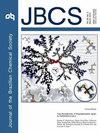Analysis of Residues of Pesticides in Tomato Processed Foods
IF 1.3
4区 化学
Q3 CHEMISTRY, MULTIDISCIPLINARY
引用次数: 0
Abstract
The tomato (Solanum lycopersicon L.) crop has great economic relevance, being one of the most processed agricultural products worldwide. Some pesticides are chemically stable and can remain in food even after processing. In this context, the objective of this work was to analyze food products derived from tomatoes (extract, sauce and ketchup), regarding the levels of pesticide residues. Fifteen samples were acquired from Vale do Jaguaribe, Ceará, Brazil. Six pesticides (bifenthrin, chlorothalonil, chlorpyrifos, cyfluthrin, pyriproxyfen, trifluralin) authorized by Agência Nacional de Vigilância Sanitária (Anvisa) for tomato cultivation were selected for the study. QuEChERS (quick, easy, cheap, effective, rugged, safe) extraction and gas chromatography coupled to mass spectrometry (GC-MS) were used in method validation, according to the recommendations of SANTE 11312/2021 guidelines. Statistical analyzes of linearity show that the six pesticides studied were classified as heterocesdastic. Limits of detection (LOD) and quantification (LOQ) values (0.01-0.03 and 0.03-0.10 mg kg-1, respectively) were below the established maximum residue limits (MRLs) for tomatoes. Accuracy and precision (78-121 and 2.3-16.7%, respectively) were satisfactory. The results indicated that among the 15 analyzed samples, one active ingredient was detected (0.05 mg kg-1) in a tomato sauce sample, lower than MRLs (Anvisa 0.15 mg kg-1 and FAO 0.3 mg kg-1). The results show the relevance of monitoring pesticide residues in tomato-derived products and the validation of new methodologies for food control.番茄加工食品中农药残留分析
番茄(Solanum lycopersicon L.)作物具有很大的经济意义,是世界上加工最多的农产品之一。有些农药在化学上是稳定的,即使经过加工也能留在食品中。在这种情况下,这项工作的目的是分析从西红柿(提取物,酱汁和番茄酱)中提取的食品中农药残留的水平。15个样本采集自巴西塞埃尔的雅瓜里贝河谷。选择Agência Nacional de vigilica Sanitária (Anvisa)授权的6种番茄种植农药(联苯菊酯、百菌清、毒死蜱、氟氰菊酯、吡虫腈、氟乐灵)。根据SANTE 11312/2021指南的建议,在方法验证中使用了QuEChERS(快速,简单,廉价,有效,坚固,安全)提取和气相色谱-质谱联用(GC-MS)。线性统计分析表明,6种农药均属于异方差。番茄的检出限(LOD)和定量限(LOQ)分别为0.01 ~ 0.03和0.03 ~ 0.10 mg kg-1,均低于规定的最大残留限量(MRLs)。准确度和精密度分别为78-121和2.3-16.7%。结果表明,在15份分析样品中,1份番茄酱样品中检出1种有效成分(0.05 mg kg-1),低于最大限量(Anvisa 0.15 mg kg-1和FAO 0.3 mg kg-1)。结果表明,番茄衍生产品中农药残留监测与食品控制新方法的验证具有相关性。
本文章由计算机程序翻译,如有差异,请以英文原文为准。
求助全文
约1分钟内获得全文
求助全文
来源期刊
CiteScore
2.90
自引率
7.10%
发文量
99
审稿时长
3.4 months
期刊介绍:
The Journal of the Brazilian Chemical Society embraces all aspects of chemistry except education, philosophy and history of chemistry. It is a medium for reporting selected original and significant contributions to new chemical knowledge.

 求助内容:
求助内容: 应助结果提醒方式:
应助结果提醒方式:


